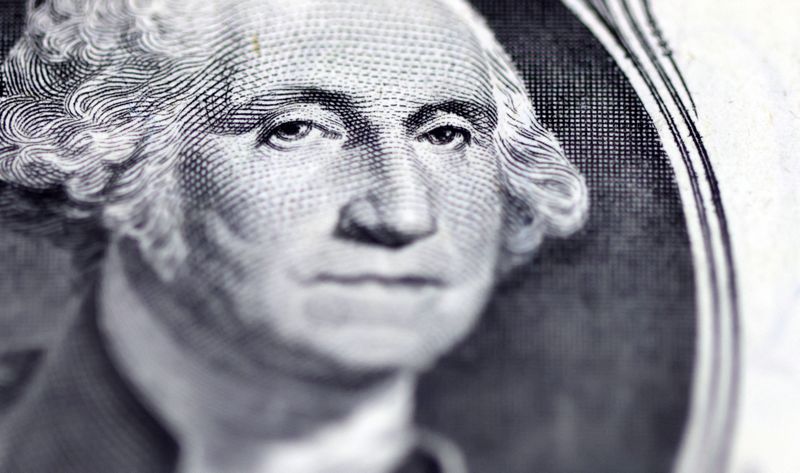(Bloomberg) — Professional investors see the dollar sliding even further from last year’s two-decade highs, as the market has underpriced the Federal Reserve’s oncoming easing cycle.
Some 87% of 331 survey respondents expect the Fed to cut interest rates to 3% or below — some significantly so — in a loosening cycle that 40% believe will start this year, according to the latest MLIV Pulse survey. That stands in contrast to market pricing that puts the implied policy rate around 3.05% in two years.
Correspondingly, professional investors are negative on the dollar, with a 17 percentage-point gap between bears and bulls. Many explicitly state that they are bearish because the yield path as priced is too high. Interestingly, the second most popular response is that banking sector stresses will largely be confined to the US, which further implies that the Fed will be forced to be more dovish than global peers.
Strange as it may appear at first glance, there’s indeed historical precedent for the Fed cutting sharply without other central banks following suit. During the tech bust in the early 2000s and the year leading up to the collapse of Lehman Brothers, US monetary policy diverged radically from global peers. In the case of the latter, the Fed cut by 325 basis points between August 2007 and April 2008, while the European Central Bank infamously hiked by 25 basis points in July 2008 — and the dollar was very weak during this pre-Lehman period.
But dollar pessimism is not purely a product of US problems. A surprisingly large cohort of investors believe that either yen or yuan appreciation will be the primary cause of dollar decline.
Why surprising? First, new Bank of Japan Governor Kazuo Ueda has so far done his best to be as boring as possible, offering little hope to those betting on an end to the super-loose policy that has driven yen weakness. That said, Ueda has a convenient window to scrap yield curve control while there is minimal pressure on local rates markets. If he chooses to act, this would likely lead to substantial yen appreciation — there is evidence that even small BOJ policy changes can have an out-sized impact on the currency.
Second, the Citigroup’s Economic Surprise Index for China rose close to the highest since 2006 this month and yet the yuan is up only about 1% against its trade-weighted basket so far in 2023. The yuan should rise, but it’s worrying that the currency has been almost impervious to good news, as it’s hard to imagine what more the nation can do to impress. Aside from ongoing geopolitical risk, it may simply be that investors need time to get used to the idea that the China trade is back.
De-dollarization?
The risk of a more generalized pivot away from the greenback is something that investors are giving serious consideration. A majority of respondents see the dollar making up less than half of global reserves within a decade.
On the other hand, there remain dollar bulls, particularly among the retail community. A clear majority of those greenback lovers believe that the Fed rate path is actually underpriced, confirming that getting the currency direction correct will ultimately boil down to nailing the policy call.
Interestingly, the risk of a debt-ceiling debacle passes almost unmentioned. However, few would dispute that today’s political environment is extremely acrimonious and risks are as high as they have been for many years. The showdown of 2011 is the best template to judge the likely market response to a serious mishap. Back then, yields fell significantly, yet the dollar rallied during this period as risk aversion dominated investors’ thoughts.
Read the full article here


